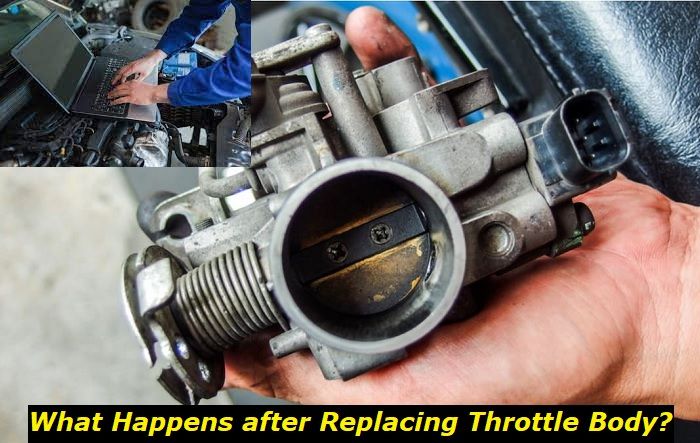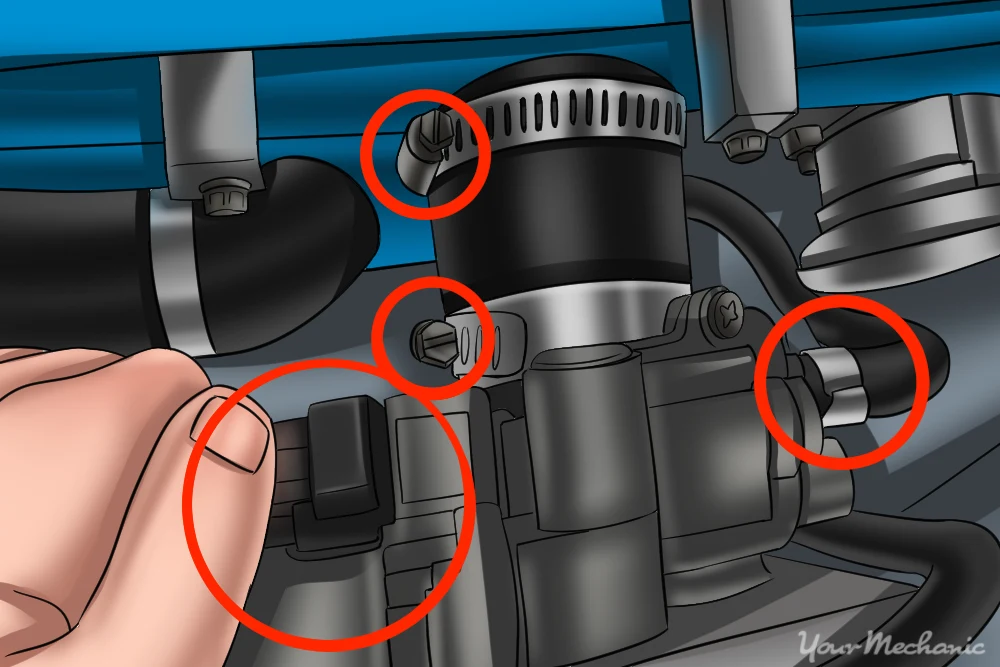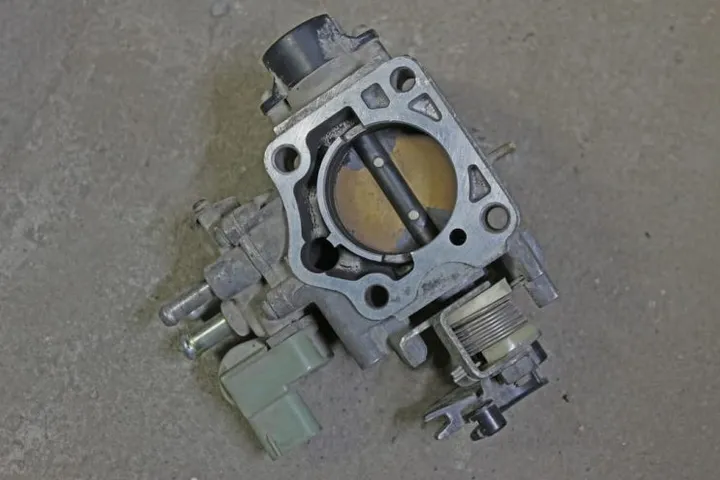


The throttle body is a crucial component in a vehicle's engine management system. It controls the amount of air that enters the engine, regulating the air-fuel mixture and ultimately affecting the engine's power output and performance. When the throttle body malfunctions or becomes excessively worn, it may need to be replaced. However, simply replacing the throttle body is not the end of the process. Certain steps must be taken to ensure that the new throttle body is properly calibrated and functioning correctly with the vehicle's engine control unit (ECU) or powertrain control module (PCM).

In this article, I'll share my expertise and walk you through the process of what to do after replacing the throttle body. We'll cover potential issues you may encounter, troubleshooting steps, repair procedures, preventive maintenance, and cost considerations. Buckle up, and let's dive into the world of throttle body replacements!
After replacing the throttle body, you may encounter a few common issues. Don't panic; these are often temporary and can be resolved with the right approach.
| Issue | Description |
|---|---|
| Check Engine Light On | The check engine light may illuminate due to the engine computer needing to relearn the new throttle body's parameters. |
| Rough Idling or Stalling | The engine may idle roughly or stall until the computer adjusts to the new throttle body. |
| Poor Acceleration | There may be a delay or hesitation in acceleration until the throttle body is properly calibrated. |
If you encounter any of the issues mentioned above, don't worry. There are a few troubleshooting steps you can take to get your vehicle back in top shape.
Clear Diagnostic Codes
Perform a Throttle Body Relearn Procedure
Check for Vacuum Leaks
Check Electrical Connections
The first step is to use an OBD-II scanner to clear any diagnostic trouble codes related to the throttle body. This will give the engine computer a fresh start and allow it to relearn the new throttle body's parameters without any lingering codes.
Most vehicles require a specific relearn procedure to calibrate the new throttle body. This process varies from one make and model to another, so it's essential to consult your vehicle's repair manual for the specific steps.
Vacuum leaks can cause rough idling or stalling, so it's crucial to inspect all vacuum hoses and connections for any leaks. A simple visual inspection and a smoke test can help identify and resolve any vacuum leaks.
Ensure that all electrical connectors to the throttle body are properly connected and secure. A loose or damaged connection can cause communication issues between the throttle body and the engine computer, leading to various problems.

If the issues persist after troubleshooting, you may need to perform additional repairs to get your vehicle running smoothly again.
Throttle Body Cleaning
Throttle Position Sensor Adjustment
Mass Air Flow Sensor Cleaning
If the new throttle body is contaminated or has debris buildup, it's essential to remove and clean it thoroughly with a throttle body cleaner. This will ensure proper airflow and prevent any obstructions that could affect engine performance.
The throttle position sensor plays a crucial role in communicating the throttle body's position to the engine computer. If the engine computer is not detecting the correct throttle position, you may need to adjust or replace the throttle position sensor.
The mass air flow sensor is responsible for measuring the amount of air entering the engine. If it's contaminated or dirty, it can cause incorrect air flow readings, leading to various engine performance issues. Cleaning or replacing the mass air flow sensor may be necessary in some cases.
To prevent future throttle body issues and ensure optimal engine performance, it's essential to follow some preventive maintenance practices.
Regular Maintenance
Use Quality Fuel
Avoid Short Trips
Follow the manufacturer's recommended maintenance schedule for throttle body cleaning and inspection. Regular maintenance can help prevent buildup and catch potential issues before they become major problems.
Using high-quality fuel can help prevent the buildup of deposits in the throttle body and other engine components. Cheap, low-quality fuel can contribute to accelerated buildup and potential performance issues.
Frequent short trips can lead to carbon buildup in the throttle body and other engine components. Try to take longer trips occasionally to allow the engine to reach its full operating temperature, which can help burn off any accumulated deposits.
The cost of replacing a throttle body can vary significantly based on the vehicle make and model. According to multiple sources, the average cost for parts and labor ranges from $200 to $700.
| Cost Component | Average Range |
|---|---|
| Throttle Body Part | $200 - $500 |
| Labor Cost | $100 - $200 |
While the cost may seem significant, it's important to remember that a properly functioning throttle body is crucial for optimal engine performance, fuel efficiency, and overall vehicle reliability.
Replacing the throttle body is a common repair procedure, but it's essential to take the necessary steps to ensure a smooth transition and prevent potential issues from arising. By following the troubleshooting steps, repair procedures, and preventive maintenance practices outlined in this article, you can ensure that your vehicle runs smoothly and efficiently after a throttle body replacement.
Remember, regular maintenance and using quality fuel can go a long way in preventing throttle body issues and extending the life of your vehicle's components. If you encounter any persistent issues or have concerns, don't hesitate to consult with a professional mechanic for expert guidance.
A throttle body relearn procedure is a process that allows the engine computer to calibrate and adjust to the new throttle body by learning its operating parameters. This ensures proper communication between the throttle body and the engine control unit.
Yes, a faulty or malfunctioning throttle body can trigger the check engine light, as it can affect the air-fuel mixture and engine performance, which the engine computer will detect and set a diagnostic trouble code.
The throttle body should be cleaned according to the manufacturer's recommended maintenance schedule, typically every 30,000 to 60,000 miles or as needed if you notice any performance issues related to a dirty throttle body.
Yes, a vacuum leak can cause rough idling or stalling after replacing the throttle body, as it can affect the air-fuel mixture and engine vacuum. Checking for and repairing any vacuum leaks is crucial after a throttle body replacement.
The throttle position sensor is responsible for communicating the position of the throttle plate to the engine computer, allowing it to adjust the air-fuel mixture and engine timing accordingly.
Yes, a dirty or contaminated mass air flow sensor can cause issues after a throttle body replacement, as it may provide inaccurate air flow readings to the engine computer, leading to improper air-fuel mixture calculations and engine performance problems.
The time it takes for the engine computer to relearn the new throttle body can vary, but it typically takes several drive cycles or a certain amount of driving time and distance, depending on the vehicle make and model.
Yes, a throttle body replacement can potentially affect fuel economy, at least temporarily, until the engine computer has fully relearned the new throttle body's parameters and adjusted the air-fuel mixture accordingly.
In some cases, special tools may be required for certain repair procedures related to the throttle body, such as throttle position sensor adjustment tools or specialized cleaning tools. Consult your vehicle's repair manual or a professional mechanic for specific tool requirements.
Yes, a throttle body replacement can potentially affect emissions, at least temporarily, until the engine computer has fully relearned the new throttle body's parameters and adjusted the air-fuel mixture accordingly. Proper calibration is crucial for maintaining optimal emissions levels.

Sarah isn't your average gearhead. With a double major in Mechanical Engineering and Automotive Technology, she dived straight into the world of car repair. After 15 years of turning wrenches at dealerships and independent shops, Sarah joined MICDOT to share her expertise and passion for making cars run like new. Her in-depth knowledge and knack for explaining complex issues in simple terms make her a valuable asset to our team.













